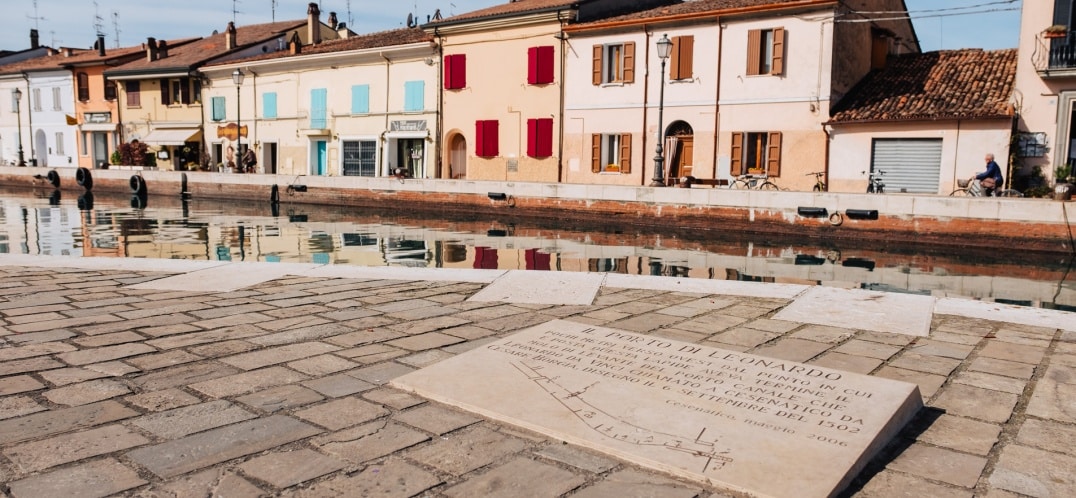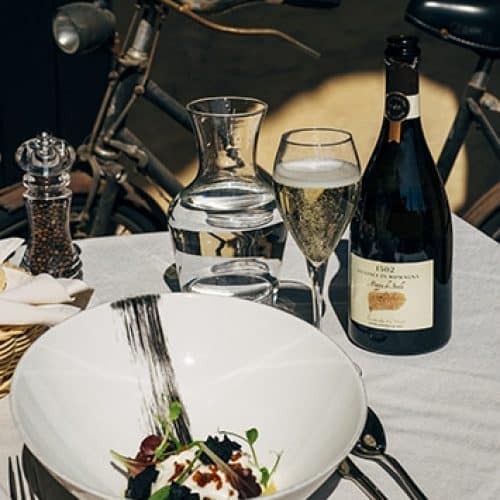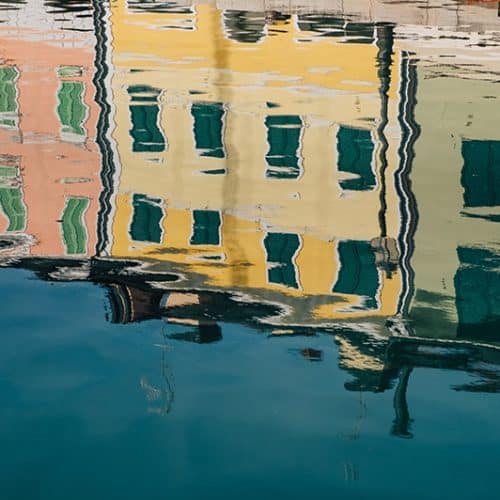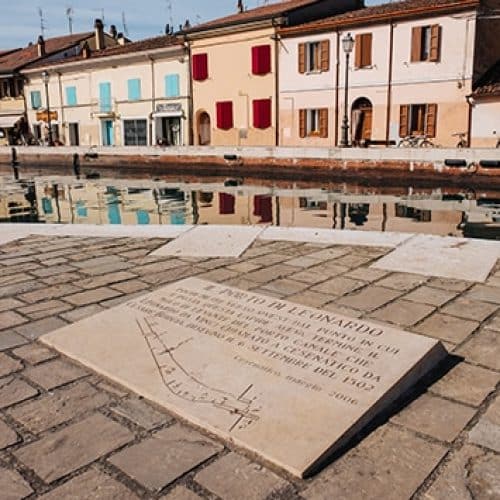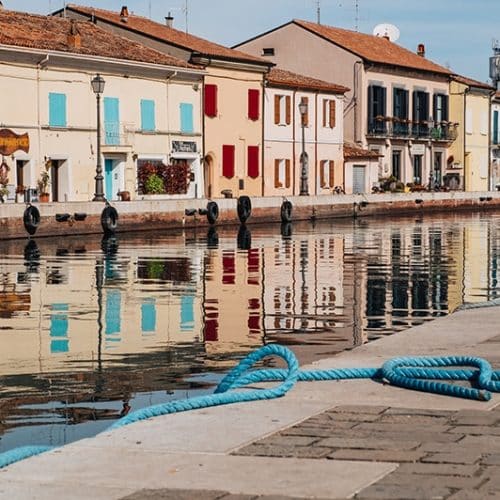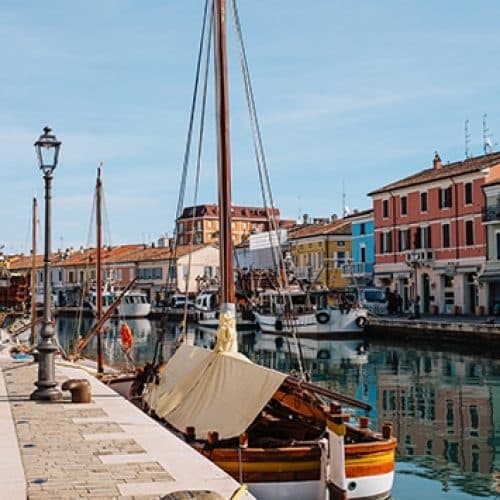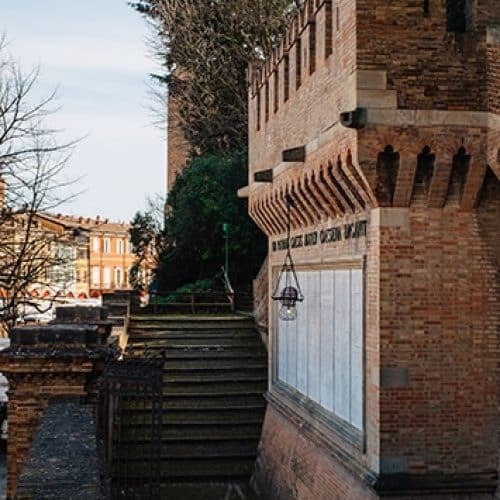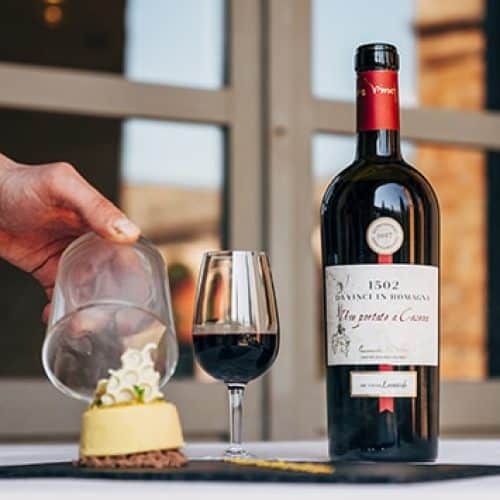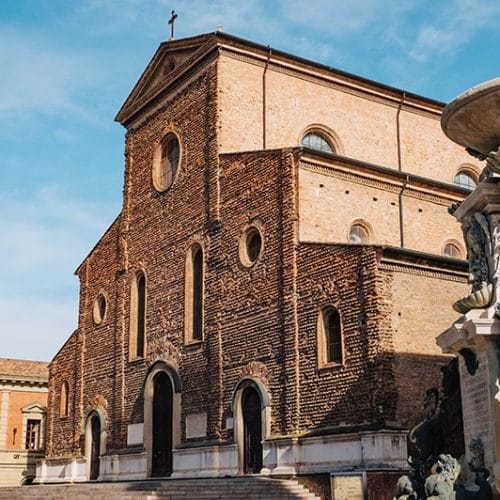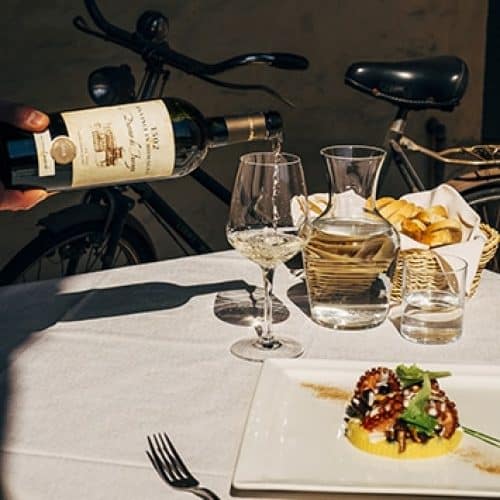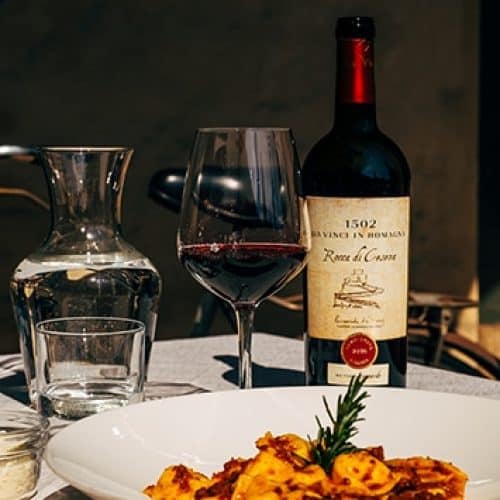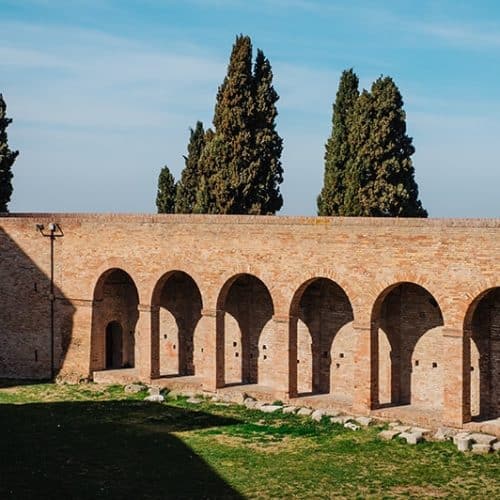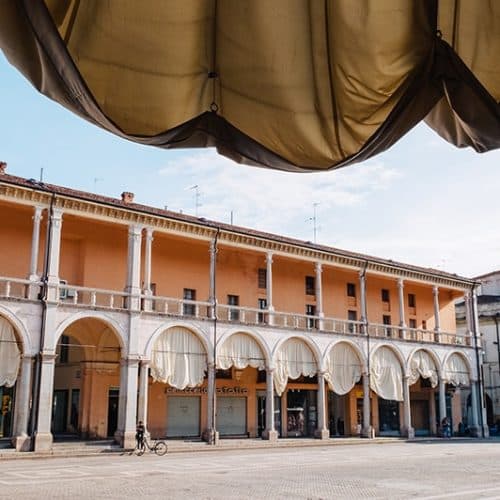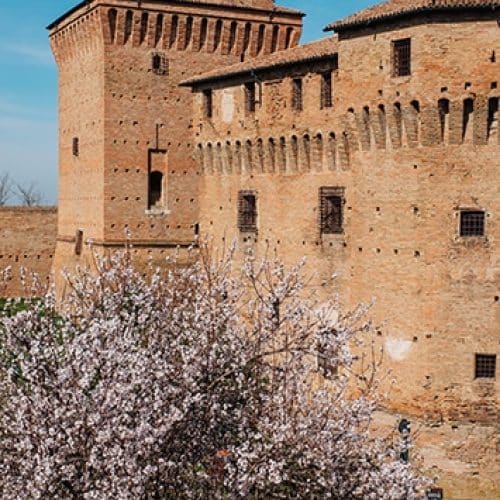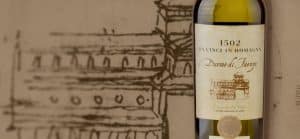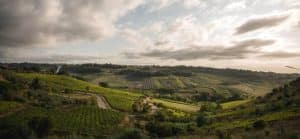Leonardo’s bond with Romagna was so clear and strong that today one can take an ideal journey in his company to the cities he visited during his Romagna period. A journey from Rimini to Imola, following the suggestions and notes of the Genius and admiring today the architecture that he himself designed and reproduced.
On the occasion of the 500th anniversary of Leonardo, Romagna remembers the passage of the Genius and the links established with a series of events and activities. At Cantine Leonardo da Vinci, we dedicate a collection of wines to the Romagna period of the Genius, strongly characterized by his encounter with the territory and its agricultural and architectural aspects. Therefore, following his journey, 1502 Da Vinci in Romagna is the line dedicated to the wines of the best Romagna vineyards produced following the indications of the Metodo Leonardo®. A special tour in five cities, which touches places rich in beauty: those that Leonardo captured in the drawings made at each stage of his journey and shown on the label.
In the summer of 1502 Cesare Borgia had to defend and fortify his possessions in the new state of Romagna. For this reason, he called the best engineer and architect known at the time: Leonardo da Vinci.
Leonardo left to visit and stay in Romagna accompanied by a small pocket notebook today listed as the Codice di Francia Manoscritto L (the original is preserved at the Institut de France Library in Paris), on which he made notes as a curious traveler, step by step instructions, sketches, ideas, inventions, considerations on Romagna. A reproduction of the notebook is on display at the Maritime Museum of Cesenatico.
Leonardo stayed and worked in five strategic cities of Romagna: Rimini, Cesena, Cesenatico, Faenza and Imola.
On August 8th 1502, Leonardo arrived in Rimini where he was enchanted by the harmonious sound of the so-called “della pigna” fountain in the current Piazza Cavour and noted: “Fassi un’armonia colle diverse cadute d’acqua, come vedesti alla fonte di Rimini, come vedesti addì 8 d’agosto 1502” (It’s a harmonious show made of various falls of water, as you came to the source of Rimini, as you saw on the 8th of August 1502)
Two days later, Leonardo was in Cesena where he portrayed the “Rocha di Cesena”. In the sketch he drew with a perspective plan the route to take to enter the Rocca Malatestiana, following a winding path along the slope of the Garampo hill.
In Faenza, Leonardo paused to admire the Cathedral, the work of Giuliano da Maiano of Fiesole, then still under construction, of which he created a drawing. He also moved around the city, along the Lamone valley, and describes in the notebook the particularity of the gullies and the land used for Faentine pottery. On September 6th 1502, Leonardo was in Cesenatico where he drew a bird’s eye view of the canal port. He then arrived in Imola where he created the map of the city, now preserved in the Royal Library of Windsor Castle. The value of the architectural plan is both scientific and artistic, and is among the most singular masterpieces of Leonardo, the result of “reconnaissance on the ground, research on pre-existing cartography, reorganization in the studio, as well as philosophical theories of the universe and aesthetic experience” writes Alessandro Vezzosi, director of the Leonardo Museums.
In addition to his work as an engineer and architect, the trip to Romagna also earned Leonardo the opportunity to deepen his technical knowledge in viticulture and oenology thanks to the spread of such practices in the Romagna region. Here in Romagna, Leonardo was struck by the vision of a particular grape hanging system that allows the drying of the bunches. He depicted it in a very precious drawing for us, le Uve portate a Cesena, which is the only bunch of grapes sketched from his hand that reached us.
Leonardo’s notes of his trip to Romagna could not be transformed into works created under his direct supervision, but certainly they were the basis of the complete reorganization of the Romagna fortifications of the cities he visited, the construction of buildings, complexes and infrastructures that they took place in Romagna in the years following his visit.
His notes are exemplary masterpieces of the integration of art, geology, hydrography, cartography and geometry, and are still today are an exemplary and current travel story to explore the territory.
